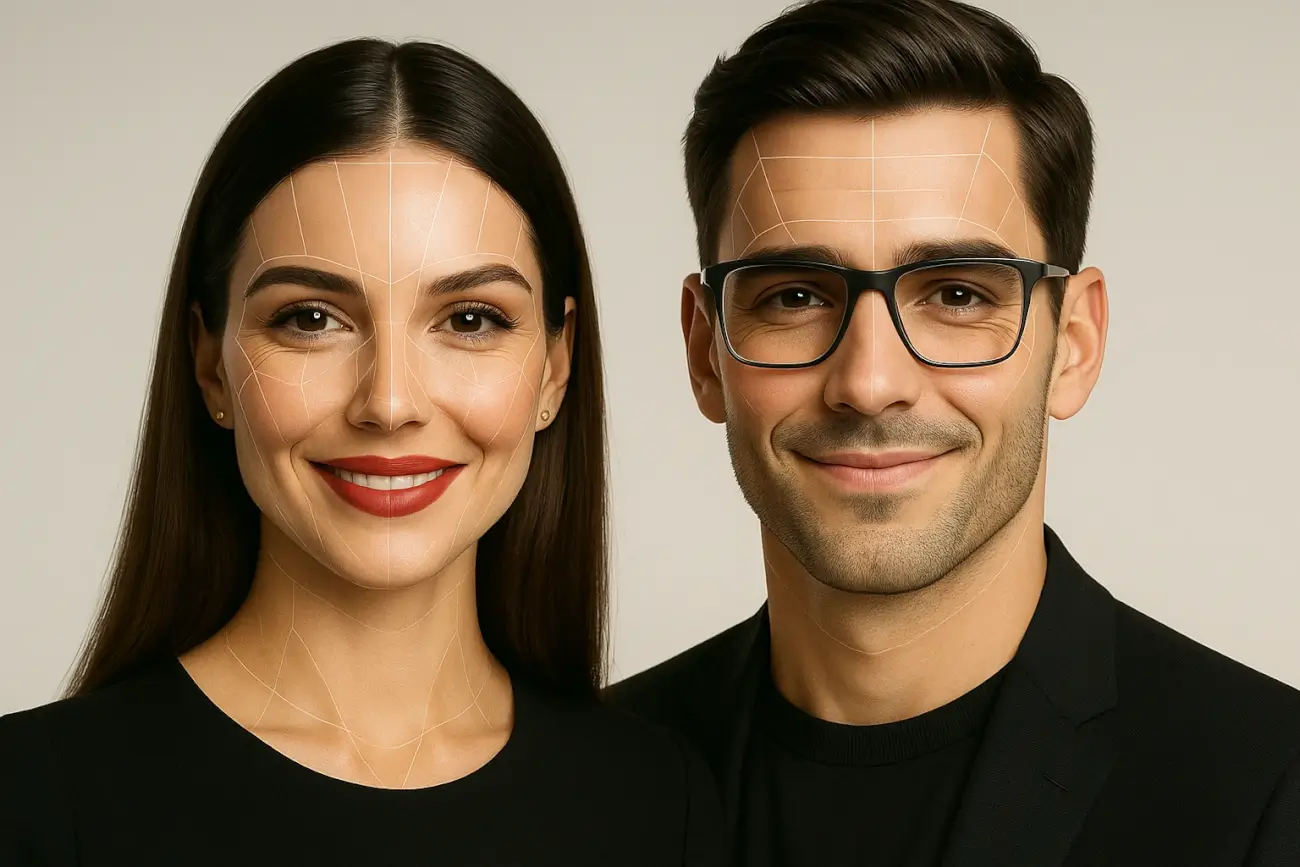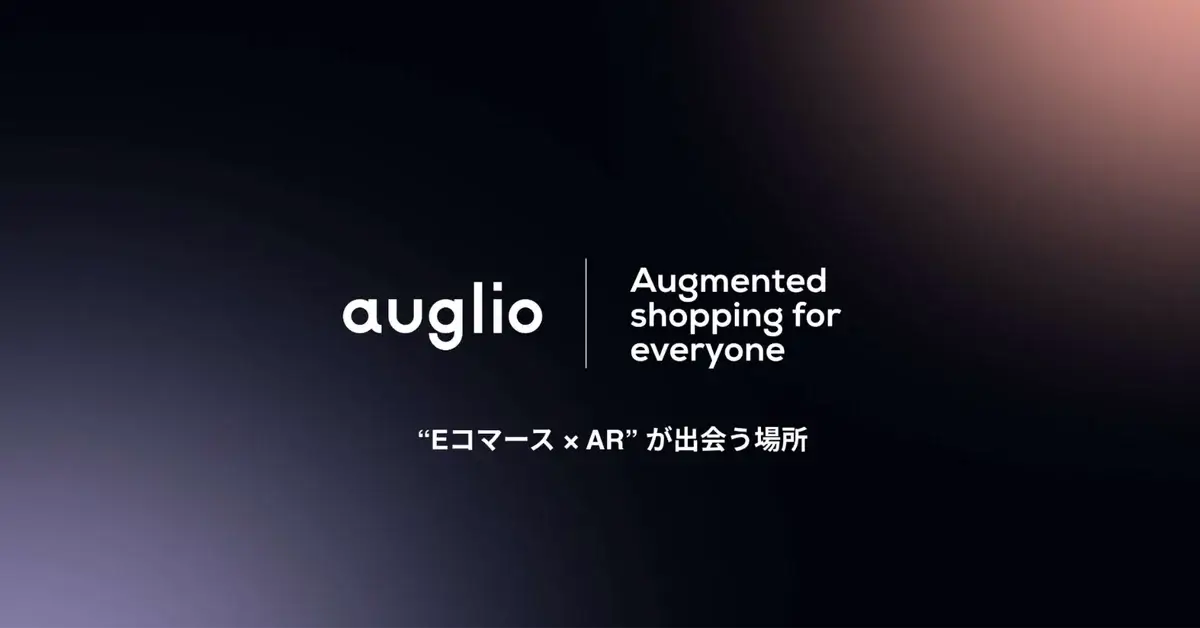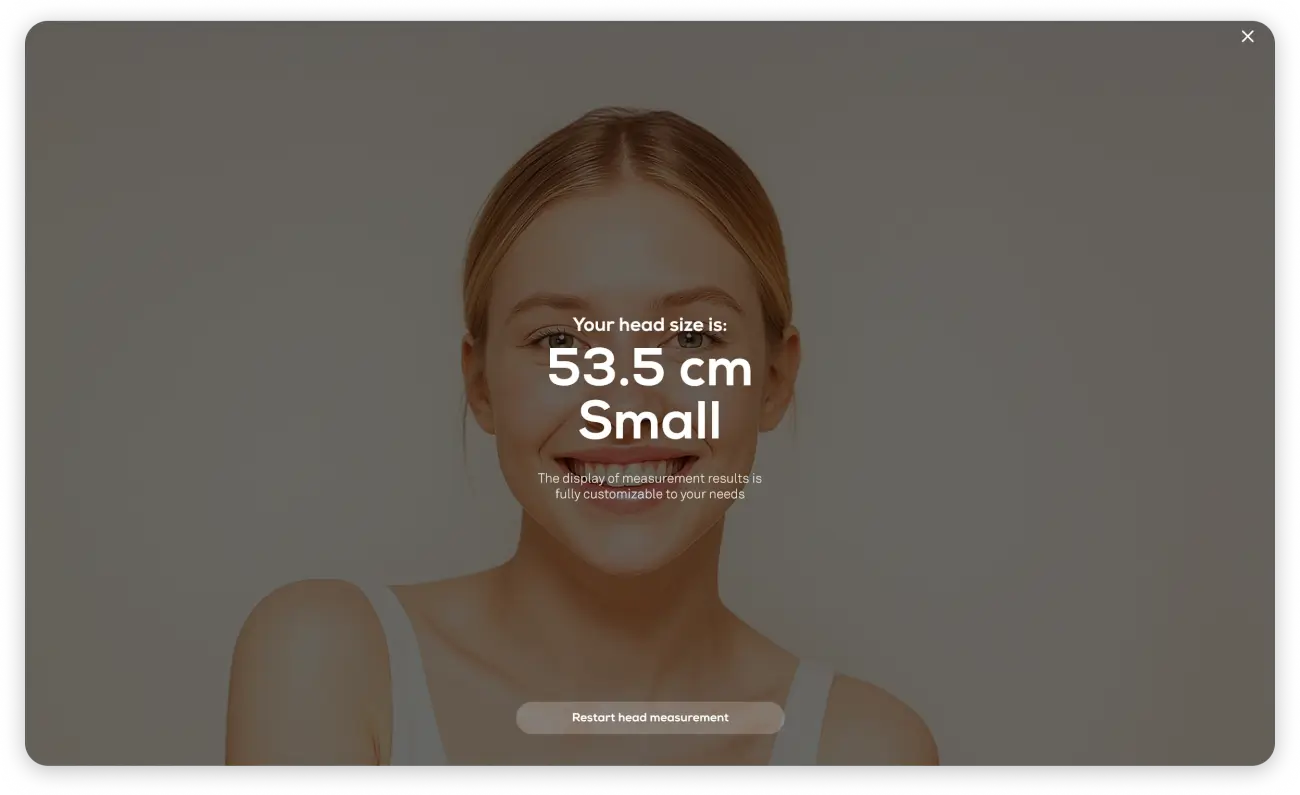The world of wigs and headwear has always been about more than appearance. A wig is not just hair; it is identity, self-confidence, and comfort. A hat or helmet is not just an accessory; it is protection, functionality, and personal style. Moving these categories online has unlocked exciting opportunities, but it has also created a dilemma. Customers are left wondering: Will this really suit me? Will it actually fit?
Unlike buying a t-shirt or lipstick, headwear demands both style and precision. A wig that looks stunning but feels too tight will never be worn. A beautifully designed hat that shifts uncomfortably ruins the experience. That is why technologies like Virtual Try-On and Head Measurement are redefining how customers shop for wigs and headwear online. Together, they not only replicate the in-store fitting process but also add new layers of confidence, interactivity, and convenience that traditional shopping cannot match.
Wigs and Headwear are difficult to sell online
When customers walk into a physical wig shop or boutique, they can instantly test both the look and the fit. Online, those natural cues disappear. The problem is twofold: style is hard to imagine without seeing oneself in the product, and sizing is even trickier. A head circumference that is just a couple of centimeters larger or smaller can be the difference between comfort and frustration.
Returns in these categories are often higher than in other fashion verticals. Sometimes the color doesn’t match expectations, other times the cap size is off, or the hat feels loose. Each return is not just a logistical burden but also a moment of disappointment for the customer. These issues explain why adoption of Virtual Try-On and Head Measurement has been accelerating — they directly solve the two main points of hesitation: how will it look and will it fit.
Virtual Try-On: Seeing is believing
Virtual Try-On technology allows shoppers to see themselves wearing wigs or hats in real time using only their camera or a simple photo upload. For wigs, this can mean experimenting with a short bob, a curly style, or even a bold color they would never dare to try in-store. For headwear, it allows customers to preview how a fedora, cap, or wide-brimmed sunhat changes their overall style.
What makes VTO powerful is not just its accuracy but the emotional reassurance it provides. Shoppers gain the confidence of seeing their own face transformed, which removes the uncertainty that typically leads to hesitation. For brands, this translates into longer engagement, higher add-to-cart rates, and ultimately, more completed purchases.
One boutique wig retailer in the UK introduced VTO with realistic textures and natural shading. Customers could try on various lengths and colors instantly. Within two months, their conversion rates doubled, and their social media community began sharing try-on selfies, creating organic buzz that no paid campaign could match.
Head Measurement: The science of fit
While Virtual Try-On answers the style question, Head Measurement tools provide the scientific assurance of fit. Using a standard camera, these tools scan and calculate head circumference with an accuracy margin as small as ±2 millimeters. The process is simple: a customer positions their head within the on-screen frame, turns slightly to each side, and within seconds receives a precise size recommendation.
This eliminates the awkward need for a tape measure or guesswork based on generic size charts. A hat that fits perfectly the first time builds immediate trust in the brand. A wig that feels natural and secure from the moment it is unboxed dramatically improves customer satisfaction.
A U.S. hat brand that adopted head measurement technology reported a 35% reduction in size-related returns. Customers frequently mentioned in reviews that they appreciated the “perfect fit guarantee,” and many returned for repeat purchases, knowing they no longer had to worry about incorrect sizing.
When style and fit work together
The real transformation happens when Virtual Try-On and Head Measurement are combined. Imagine the customer journey: first, the shopper scans their head to determine their exact size. Then, they explore different wig styles or hat designs virtually, seeing themselves in every option. Finally, they receive a recommendation tailored to both style and fit.
This approach creates a digital fitting room that is more reliable than the physical one. In a store, a customer might try a wig that looks good but later realize it feels tight after a few hours of wear. Online, the combination of realistic visualization and precise measurement reduces that risk before the purchase is even made.
Benefits for brands beyond conversions
The obvious benefits are higher sales and fewer returns, but the ripple effects are even more significant. With accurate measurement data, brands can adjust their inventory planning, ensuring they stock the sizes that customers actually need. The data also fuels personalization — recommending styles that match not only head size but also face shape, skin tone, or previously purchased items.
From a sustainability standpoint, fewer returns mean fewer unnecessary shipments, reducing carbon emissions and logistics costs. And from a branding perspective, companies that offer cutting-edge AR solutions are seen as innovative and customer-focused, which strengthens loyalty in highly competitive markets.
How to implement VTO and Head Measurement in practice
For companies considering these technologies, success lies in thoughtful implementation. The first step is defining the goal: whether it is to reduce returns, to increase conversions, or to create a stronger brand experience.
The choice of technology partner is equally important. Accuracy is key — a head measurement tool should deliver results within millimeter precision, while a VTO system must render wigs and headwear in a way that feels natural, not cartoonish. Integration should also be seamless, working directly inside an e-commerce store whether it runs on Shopify, Magento, WooCommerce, or a custom solution.
Education plays a big role as well. Customers may not be familiar with scanning their head online, so clear instructions and a guided experience build confidence. A simple three-step flow — measure, try on, choose — makes the process intuitive. Finally, ongoing analysis of usage data helps brands refine recommendations, optimize inventory, and improve marketing campaigns.
Case Studies: Learning from Early Adopters
One European eyewear retailer experimented with extending their Virtual Try-On to include caps. The adoption rate exceeded expectations, proving that once customers are comfortable with AR in one category, they are more likely to use it in another.
A boutique wig shop that embraced VTO quickly discovered that first-time wig buyers were their biggest beneficiaries. Many had never purchased a wig before and felt anxious about committing online. The ability to see themselves instantly reassured them.
Meanwhile, a U.S. hat company marketed its new “Perfect Fit Guarantee,” powered by head measurement. Customers responded positively, and the brand’s loyalty program saw higher participation as shoppers felt they could rely on the sizing process.
The future: AI, social shopping, and omnichannel experiences
Looking ahead, the next evolution will be the integration of AI. Imagine a virtual stylist that not only helps you try on wigs but also recommends shades that complement your undertones or hat shapes that enhance your face. These assistants could function like in-store experts, guiding customers through the digital journey with natural conversation.
Social sharing is also becoming essential. Shoppers increasingly want to post their virtual try-on looks on Instagram or TikTok, asking friends for instant feedback. This transforms the shopping experience into a social one, boosting organic reach for brands.
Finally, the boundary between online and offline will blur. Stores may offer AR mirrors connected to the same customer profile used online, creating a consistent, personalized experience across all channels.
The new standard of Wig & Headwear shopping
Selling wigs and headwear online has always been a challenge because it combines two highly personal factors: how something looks and how it fits. Virtual Try-On and Head Measurement resolve these issues by giving customers clarity, control, and confidence.
For brands, the benefits are measurable — higher engagement, lower return rates, better inventory planning, and stronger brand reputation. But beyond the numbers lies something deeper: a sense of trust between the customer and the retailer. When shoppers feel understood and supported, they return not only for products but also for the experience.
In 2025 and beyond, offering these technologies will not be a competitive edge. It will be the baseline expectation. The brands that adopt early will shape the standards of tomorrow’s shopping journey.
👉 Experience it yourself in our Demo Store and see how Auglio’s Virtual Try-On tools can elevate your eyewear business.






